
The Cerophytidae are a family of beetles belonging to Elateroidea. Larvae are associated with rotting wood, on which they are presumed to feed. The family contains over 20 species in five genera, primarily distributed in the New World, but also in Eurasia and Africa. 17 fossil species in 7 genera are known extending to the Early Jurassic. Like some other elateroids, the adults are capable of clicking.
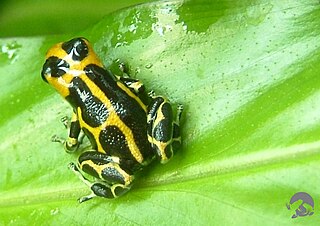
Ranitomeya imitator, is a species of poison dart frog found in the north-central region of eastern Peru. Its common names include mimic poison frog and poison arrow frog, and it is one of the best known dart frogs. It was discovered in the late 1980s by Rainer Schulte who later split it up into more subspecies; describing each as a specific color morph, and sometimes having a separate behavioral pattern. The acoustics, morphs, and behavior of the species have been extensively researched.
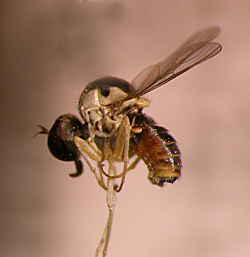
Mythicomyiidae, commonly called mythicomyiids, are very tiny flies (0.5–5.0 mm) found throughout most parts of the world, especially desert and semi-desert regions, except the highest altitudes and latitudes. They are not as common in the tropics, but genera such as Cephalodromia and Platypygus are known from these regions. Many of these "microbombyliids" have a humpbacked thorax and lack the dense vestiture common in the Bombyliidae. Mythicomyiids have until recently not had much attention in the literature. Their small size has caused them to be missed when collecting. Yellow pan trapping and fine-mesh netting in Malaise and aerial sweep nets has resulted in a number of undescribed species from many parts of the world. A high diversity of both genera and species exists for this family in Africa, especially northern and southern portions. About 350 species are known. Hundreds more await description.

Agabus is a large genus of predatory aquatic beetles in the family Dytiscidae, proposed in 1817 by William Elford Leach and named after Agabus, an early follower of Christianity. The adult beetles are moderate-sized, 5 to 14 mm long. The genus is primarily Holarctic in distribution, with only a few species known from the Afrotropical and Neotropical realms. Three species of Agabus, namely A. clypealis, A. discicollis and A. hozgargantae are endangered according to the IUCN Red List. The division into subgenera is not widely accepted. However, a number of species groups are recognized after the works of David J. Larson and Anders N. Nilsson. The genus is probably polyphyletic or paraphyletic. In a recent study of mitochondrial DNA, Agabus was found paraphyletic with respect to several of the species groups of Platambus, a closely related genus in the tribe Agabini. Lately the taxonomy of the genus has been revised, and some groups of species were transferred from Agabussensu stricto to other genera in the tribe Agabini.

Ilybius is a large genus of predatory aquatic beetles in the family Dytiscidae. The genus is native to the Palearctic, the Near East, the Nearctic, and North Africa. 70 species has been described from this genus:

Hemipenthes is a large genus of flies belonging to the family Bombyliidae (bee-flies). There are many described species, distributed throughout the Holarctic realm. These are small to large robust flies with a body length of 5–14 mm. They can be distinguished from similar genera (Villa) by their wing venation. A number of species formerly in this genus were moved to a separate genus, ins in 2020.

Notiophilus is a genus of ground beetle native to the Palearctic, the Nearctic, the Near East and North Africa. It contains the following 57 species:

Hermaea is a genus of sacoglossan sea slugs, a shell-less marine opisthobranch gastropod mollusks in the family Hermaeidae.
Timia is a genus of flies in the family Ulidiidae, which is difficult to separate from the genus Ulidia.
Orfelia is a cosmopolitan genus of flies in the family Keroplatidae.
Sciophila is a genus of fungus gnats in the family Mycetophilidae. There are at least 50 described species in Sciophila.
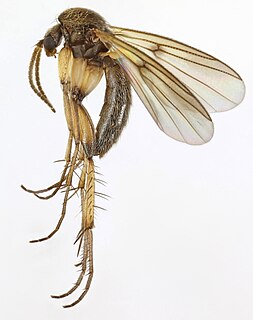
Zygomyia is a genus of fungus gnats in the family Mycetophilidae. There are at least 80 described species in Zygomyia.
Desmatoneura is a genus of bee flies in the family Bombyliidae. There are about 18 described species in Desmatoneura.
Ectrepesthoneura is a genus of fungus gnats in the family Mycetophilidae. There are more than 20 described species in Ectrepesthoneura.

Ditomyia is a genus of fungus gnats in the family Ditomyiidae.
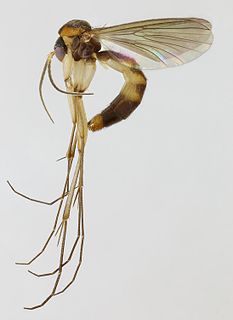
Allodia is a genus of flies belonging to the family Mycetophilidae.

Allodiopsis is a genus of fungus gnats belonging to the family Mycetophilidae.

Anatella is a genus of flies belonging to the family Mycetophilidae.
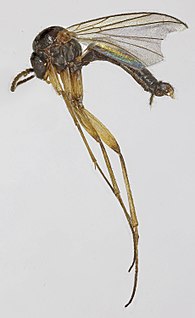
Acnemia is a genus of fly belonging to the family Mycetophilidae.
Sternolophus is a genus of water scavenger beetles in the family Hydrophilidae containing nine described species in two subgenera.













